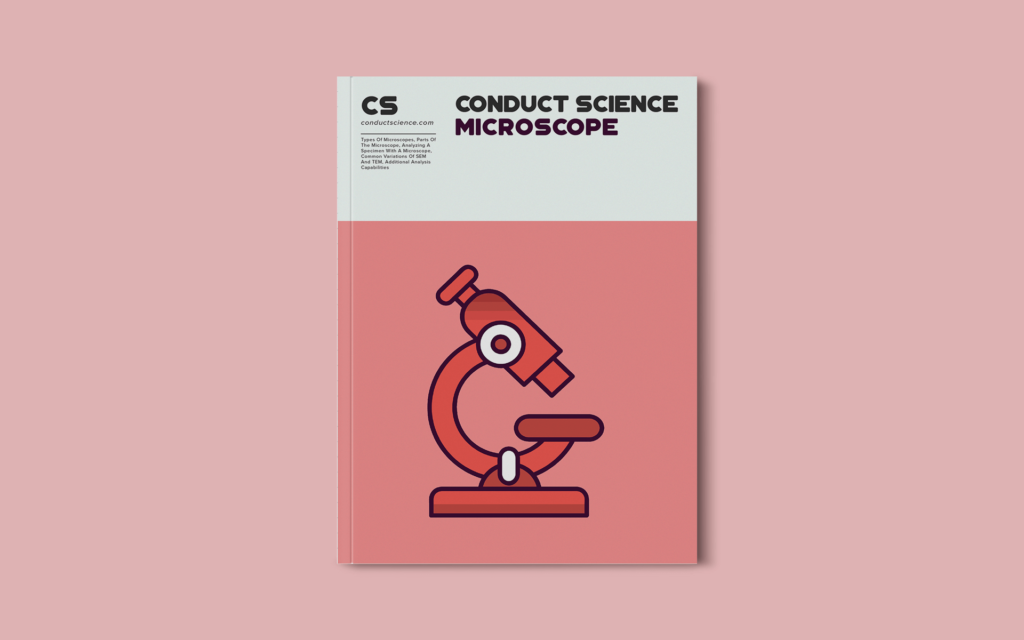

The light or optical microscope is a common lab tool that can be used to visualize structures with sizes below that which can be seen by the human eye. Light microscopes are useful for size ranges down to roughly 1 micron (for comparison, the diameter of a human hair is approximately 100 microns). These microscopes are versatile in the types of materials and samples they can analyze (opaque or transparent, liquid or solid). A number of modular accessories have been developed which enhance the capability of the microscope, giving it, for example, improved contrast or the ability to image in three dimensions. When combined with a digital camera and image analysis software, light microscopes can also be used to collect quantitative information.
Light microscopy is ideally suited for imaging biological specimens, because the resolution of the microscope is within the size range of key cellular structures, and because using it requires only a minimal amount of perturbation of the specimen. For these reasons, several techniques have been developed specifically for biological applications. Examples include the diverse range of fluorescent probes that can be used to selectively highlight structures and processes within cells.
There is uncertainty surrounding the inventor of the first light microscope. However, magnifying microscopes consisting of collapsing tubes, similar to a telescope, dating back to as early as the late 16th or early 17th century. Credit for inventing this type of the microscope is sometimes given to Zacharias Jansen (1580–1638). Antony van Leeuwenhoek (1632–1723) invented the simple microscope in 1670, which had a magnification up to 200x, and doubled the resolution compared to the best compound microscopes of those days. He observed the individual cells, protozoans, bacteria, muscle cells, and sperm cells for the first time. Englishman Robert Hooke (1635–1703) added a stage to hold the specimen, an illuminator, and fine focus controls to improve the compound microscope further. The magnification of commonly available microscopes was limited to roughly 30-50x until the 1800s, and the images exhibited blurry edges and rainbow-like distortions. These issues were eliminated by Carl Zeiss (1816–1888) and Ernst Abbe (1840–1905), who added the sub-stage condenser and developed the superior lenses that provided improved resolution and higher magnification.
This article will describe the key parts of the light microscope, general steps for analyzing a specimen and caring for the microscope, a number of variations on it that are commonly used, and finally a comparison with other types of microscopes.
All modern light microscopes have several parts in common. Following the path of the light, the parts are:
All of these parts are mounted on a microscope frame, which will also include focusing and positioning knobs or digital controllers to position the components relative to one another.
Light microscopes can be used to visualize materials by transmitting light through them (known as diascopic illumination, as in the case of looking at cells in a fluid mounted on a microscope slide with a coverslip), or by using reflected/scattered light (episcopic illumination, for example, visualizing an insect or small electronic components).
The section above described the basic components of the common microscope. There can be modifications made to these basic components to specialize the microscope for certain applications. There are many possible modifications available, many of which can be combined to increase the capabilities of a single microscope. Five of the most common are listed below.
In these techniques, imaging is based on phase shifts in the light passing through the specimen due to variation in the optical path length (distance multiplied by refractive index) in the specimen. The refractive index may vary across a specimen due to small material differences, for example, the difference in the liquid environments inside and outside a cell. Measuring the phase shift provides an additional improvement in contrast not available in simply transmitted light microscopy. The main difference between the two techniques is that phase-contrast measures simple differences in the optical path length, whereas DIC measures the rate of change (or gradient) in the path length as the light passes through the specimen.
For imaging in biology, phase contrast causes the cells to appear dark against a light background, while DIC gives a pseudo–three-dimensional (3D) shaded appearance to the cells. Regular brightfield, transmitted light microscopy is sufficient to observe the general outlines of cells, but phase contrast or DIC is vital to get detailed, high-contrast images (Thorn, 2016).
In this type of microscopy, a specimen is prepared, using a stain or dye for example, so that certain parts of it will absorb one wavelength of light, and emit another, different wavelength (the property of fluorescence). The modification required to the microscope for this type of analysis is a filter on the light source so that the sample is illuminated only by a specific wavelength, and a second filter between the specimen and the observer, so that only the specific emitted wavelength of light reaches the observer. In this way, individual parts of very complex structures can be selectively illuminated to the observer. This is used, for example, in visualizing specific parts of human cells. This technique was recognized in the Nobel Prize in chemistry in 2014.
This type of microscope filters the light source, and the light passing between the specimen and the observer, by polarization state. An example of this is cross-polarized illumination. In this technique, polarization filters (fine gratings) offset by 90 degrees are placed on the light source, and between the specimen and observer. The only light that can pass through both filters is light that has had its polarization state affected by the specimen. Crystalline materials that alter the polarization state will show up bright in this technique.
In confocal microscopy, an additional set of optical elements (sometimes including a laser) are used so that only light from a specific point, within a narrow depth in the sample, reaches the observer. This point is then scanned, or rastered, over the sample to develop a full image. This provides a number of benefits. First, since only in-focus light is detected, the resolution of the image is significantly improved. This is particularly useful for fluorescence microscopy, where extraneous out-of-focus light is emitted when the entire sample is illuminated at the excitation wavelength. Second, since light is selectively collected from a narrow focal plane, the information collected consists of a series of two-dimensional sections which can be analyzed individually, or assembled to construct a three-dimensional image.
The disadvantages of using confocal microscopy include the requirement of more complex and expensive optical elements to scan and focus the illumination. Also, since the technique is inherently a point-by-point analysis, there can be a trade-off between scanning speed and image quality.
In this type of microscope, two slightly offset optical paths exist between the specimen and the eyepiece, so that the user has a depth resolution of the sample. This technique is useful when work is being done on the specimen, for example, dissection or assembly of small pieces.
Additional optics are available to improve the contrast in certain types of samples, which include phase contrast, differential interference (Nomarski) contrast, and dark field techniques. These techniques require specialized condenser and objective optics. Further modifications can be made to collect spectroscopic data on specimens in parallel to optical images, infrared or Raman data for example, which can be useful in determining material composition.
As with any lab analysis, the first step to using light microscopy is to develop a plan and set of goals for the analysis. One way of doing this is to list the questions you hope to answer using this technique.
The next step is sample preparation. For normal optical microscopy, this is relatively straightforward. For liquid samples that will be analyzed using transmitted light, common steps are:
The analysis of opaque samples by reflected light microscopy is similar, but instead of preparing a slide, the specimen is mounted on a support that will prevent it from moving during analysis.
The most common form of damage to a light microscope is contamination or scratches on the sensitive precision lenses and other optical components. This can be avoided by:
